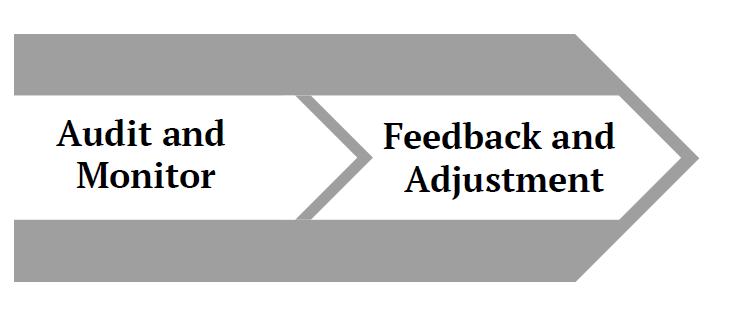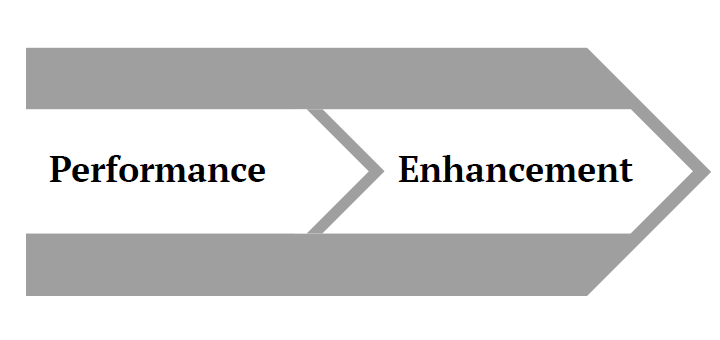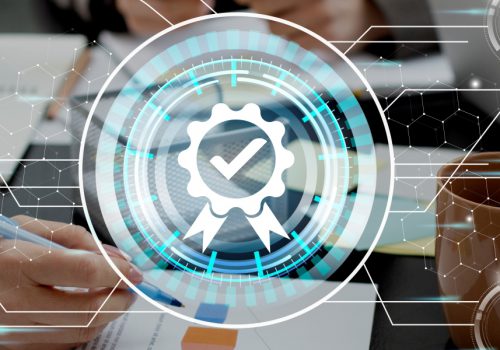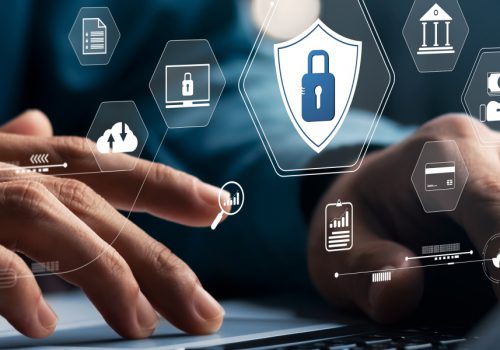As a Cybersecurity Consultant and Practice Leader, I often encounter clients’ inquiries regarding the most effective approach for implementing or complying with an ISO standard, particularly in security.
My response highlights the simplicity and efficacy of the Plan-Do-Check-Act (PDCA) model, a framework universally applied across various ISO standards to foster continuous improvement. Implementing ISO/IEC 27032 within organizations using the PDCA cycle ensures that cybersecurity efforts are systematic, methodical, flexible, and robust enough to adapt to evolving cybersecurity challenges. This approach not only streamlines the compliance process but also enhances the organizations’ resilience against potential security threats.

Approach
The Plan-Do-Check-Act (PDCA) cycle is a four-stage model for continuous improvement in business processes, particularly effective in quality management, compliance frameworks, and cybersecurity. Originating from the principles of Walter A. Shewhart and later popularized by W. Edwards Deming, the PDCA cycle facilitates systematic, iterative testing of changes to processes or products in a controlled way, leading to enhanced quality and efficiency.

- Plan – Involves identifying a goal or needed improvement and planning the change.
- Do – Refers to implementing the planned change on a small scale.
- Check – Involves studying the results of the implementation to determine whether it met the desired outcome.
- Act – Requires that the change be fully integrated as a standard practice if successful, or if not, initiate another cycle of planning to refine the process.
By repeatedly going through these phases, organizations can achieve a higher level of quality and more effective operations.

Optimizing ISO/IEC 27032 Implementation: Integrating the PDCA Cycle
Let us delve into optimizing ISO/IEC 27032 implementation by integrating the PDCA cycle.
Plan (Strategic Preparation)

Thorough Assessment
To conduct a thorough assessment, the following activities must be undertaken:
- Review ISO/IEC 27032 to understand its comprehensive scope, which includes guidelines for enhancing cybersecurity, protecting privacy, securing data and infrastructure, and promoting a secure cyber environment.
- Form a team that includes members from IT, cybersecurity, compliance, and other relevant departments. This team will lead the assessment process.
- Gather existing security policies, process documentation, and system architecture details. This includes reviewing existing security measures, incident response strategies, and previous security assessments.
- Compare current practices with ISO/IEC 27032 requirements, and identify compliance gaps, security shortfalls, and enhancement opportunities using checklists and tools designed for ISO compliance reviews.
- Based on the findings, create a detailed action plan that includes prioritized steps to close gaps, mitigate risks, and align with ISO/IEC 27032 standards.
Cybersecurity Policies
To develop cybersecurity policies, the following activities must be undertaken:
- Identify a broad range of stakeholders affected by cybersecurity policies, including technical staff, senior management, operational employees, and external partners.
- Develop a strategy to engage stakeholders through structured meetings, workshops, and regular communications to gather input and emphasize the importance of effective cybersecurity measures.
- Draft policies that cover key areas identified in the ISO/IEC 27032 standards and initial assessment, including user access control, data encryption, incident reporting, and recovery plans.
- Circulate the draft policies among the stakeholders for feedback. Utilize their insights to refine the policies, ensuring they are practical and clear to all parties involved. Finalize and officially implement the policies after thorough reviews and adjustments through an organization-wide launch that includes training sessions, distribution of documentation, and a senior management announcement emphasizing their importance.
Do(Implementation Phase)

Deploying Enhanced Security Measures
To deploy enhanced and adequate security measures, the following activities must be undertaken:
- Based on the cybersecurity assessment, identify specific areas requiring enhancements, such as vulnerabilities in data encryption, access control, or intrusion detection.
- Evaluate and implement superior encryption protocols, upgrade access controls to include multi-factor authentication and role-based access, and deploy sophisticated intrusion detection systems that can detect and respond to both known and emerging threats, ensuring comprehensive security coverage.
- Integrate these security solutions into the current IT environment by configuring hardware and software, setting security parameters, and ensuring compatibility with existing applications and systems.
- Before full deployment, conduct thorough testing to ensure that the new security measures work as intended without disrupting normal business operations. This should include penetration testing and simulated attack scenarios.
- Roll out the security enhancements across the organization. After deployment, continuously monitor the performance of the security enhancements and make necessary adjustments.

Training and Awareness Programs
To develop adequate and customized awareness programs and deliver training, the following activities must be undertaken:
- Create detailed training modules that cover ISO/IEC 27032 guidelines and general cybersecurity best practices, such as secure password creation, recognizing phishing attempts, and safe internet usage, tailored to the organization’s needs.
- Assess the specific training needs of different groups within the organization. IT and security teams will require deep technical training, whereas other employees may only need basic security awareness training.
- Organize in-depth formal training sessions for IT and security staff through in-house or professional providers, and develop or procure interactive e-learning modules for general staff to complete at their own pace to enhance retention.
- Roll out the training program according to the needs identified.
- Regularly assess the effectiveness of the training program through quizzes, practical tests, or feedback surveys.
- Cybersecurity is a rapidly evolving field. Regularly update the training content to reflect new threats, technologies, and best practices.

Audit and Monitor
To conduct efficient and effective audits and ensure effective monitoring, the following activities must be carried out:
- Choose appropriate continuous monitoring tools that align with the organization’s cybersecurity requirements and the specifics of ISO/IEC 27032.
- Integrate these tools into the existing IT infrastructure to monitor critical assets continuously.
- Establish clear parameters and thresholds for alerts that align with your security policies and risk management strategies.
- Train IT and cybersecurity teams on how to use monitoring tools effectively. Ensure they understand the type of events to watch for, how to interpret alerts, and the appropriate response protocols.
- Create a regular audit schedule that includes both internal and external audits to assess compliance with ISO/IEC 27032 standards. Determine the frequency of these audits based on risk assessment, with higher-risk areas audited more frequently.
- Conduct the audits as per the schedule, focusing on verifying that the security measures meet or exceed the standards set by ISO/IEC 27032. Audits should also assess the effectiveness of the monitoring tools and processes in place.
- Analyze the results from audits to identify any compliance gaps or areas where security practices can be improved. Document findings and prepare audit reports for management and stakeholders.
- Based on the audit findings, implement corrective actions to address any deficiencies. Update policies, procedures, and controls as necessary to ensure they continue to meet the requirements of ISO/IEC 27032.
- Continuously repeat the monitoring and auditing cycle to adapt to new threats, changes in compliance requirements, and advancements in technology, thereby, maintaining an effective cybersecurity posture compliant with ISO/IEC 27032 standards.
Feedback and Adjustment
To gather necessary feedback and perform an adequate adjustment, the following activities must be carried out:
- Determine the frequency of assessments based on the organization’s risk profile and the evolving threat landscape. Frequent assessments are crucial in dynamic environments where cybersecurity threats continually evolve.
- Collect relevant data from a variety of sources, including security logs, incident reports, user feedback, and system performance data. This data should provide a comprehensive view of the current state of cybersecurity measures.
- Use analytical tools and techniques to examine the collected data for trends, anomalies, or patterns that may indicate underlying vulnerabilities or inefficiencies in existing cybersecurity strategies.
- Schedule regular meetings with key cybersecurity team members and stakeholders to discuss findings from the data analysis. Use these discussions to identify potential areas for improvement and to brainstorm possible solutions.
- Based on the findings and discussions, prioritize the necessary adjustments. Consider factors such as the severity of the vulnerability, the potential impact of an exploit, and available resources.
- Develop a detailed action plan for each adjustment, specifying what changes will be made, who will be responsible, and the timelines for implementation. This plan should align with the overall business objectives and compliance requirements.
- Implement the planned adjustments systematically, ensuring that changes are properly managed and documented. This may involve updating software, revising protocols, reconfiguring hardware, or enhancing training programs.
- After implementing changes, closely monitor the effects to ensure they are working as intended. This involves revisiting the same metrics used in the initial assessment to measure improvement or uncover any unintended consequences.
- Regularly solicit feedback from end-users and IT staff about the changes. Feedback can provide insights into how the adjustments are affecting day-to-day operations and user satisfaction.
- Use the feedback and new data collected to make further refinements to cybersecurity strategies. This iterative process helps the organization stay adaptive and responsive to new challenges and emerging threats.
Act (Continuous Improvement)

Performance and Enhancement:
To evaluate the performance and apply enhancement, the following activities must be undertaken:
- Periodically review and assess the existing incident response and recovery plans to identify areas that need improvement or updating due to changes in the threat landscape or organizational infrastructure.
- Involve stakeholders from various departments, such as IT, security, operations, and senior management in the review process to gather diverse perspectives and ensure all aspects of the organization are considered.
- Regularly simulate incidents through drills and tabletop exercises to test the effectiveness of current response strategies and to identify gaps or weaknesses in response times and actions.
- After each simulation, conduct a thorough analysis of the response effectiveness. Document any issues that arose during the exercise, focusing on delays, communication breakdowns, and decision-making bottlenecks.
- Solicit feedback from participants and observers of the response drills to gain insights into the practical aspects of executing the response plans and to understand the user experience during an incident.
- Revise response plans and recovery strategies based on the outcomes of the tests and feedback received. Ensure that documentation is clear, updated, and accessible to all relevant parties.
- Regularly evaluate and integrate new technologies or improvements that can enhance the detection, analysis, and containment phases of incident response.
- Update training programs for response teams and broader staff to incorporate new procedures, tools, and learnings from recent incident handling experiences.
- Communicate any changes in the response plans to all stakeholders, ensuring that everyone understands their roles and responsibilities under the new strategy.
- Continuously monitor the effectiveness of the implemented changes through ongoing surveillance, real incidents, and additional drills to ensure the response strategies remain robust and agile.
- Regularly update strategies to comply with relevant laws, regulations, and standards, including those specific to industry and geography, to ensure legal and regulatory compliance during and after incident handling.
- Foster an environment of persistent learning and version, updating your cybersecurity techniques based on audit consequences and industry trends.

Benefits of the PDCA Cycle
- Enhanced Defensive Capabilities: Regular updates for your cybersecurity defenses appreciably fortify your enterprise’s capability to face up to cyber threats.
- Building Stakeholder Confidence: Compliance with ISO/IEC 27032 now not only ensures adherence to standards but additionally complements acceptance as true amongst clients and stakeholders, reflecting a critical dedication to cybersecurity.
- Proactive Risk Management: The PDCA framework allows your corporation to live ahead of capability risks by way of adapting proactively to new cybersecurity threats.
Like other ISO frameworks, using the PDCA model for ISO/IEC 27032 implementation fosters a proactive culture of assessment and refinement, which is vital for setting up a resilient cybersecurity management machine that stays powerful in the face of the latest demanding situations.









